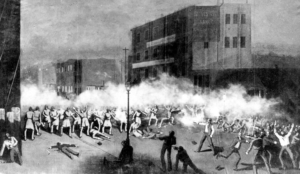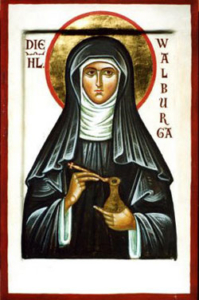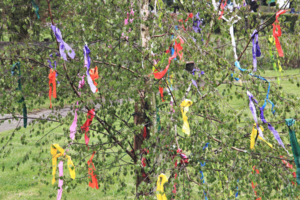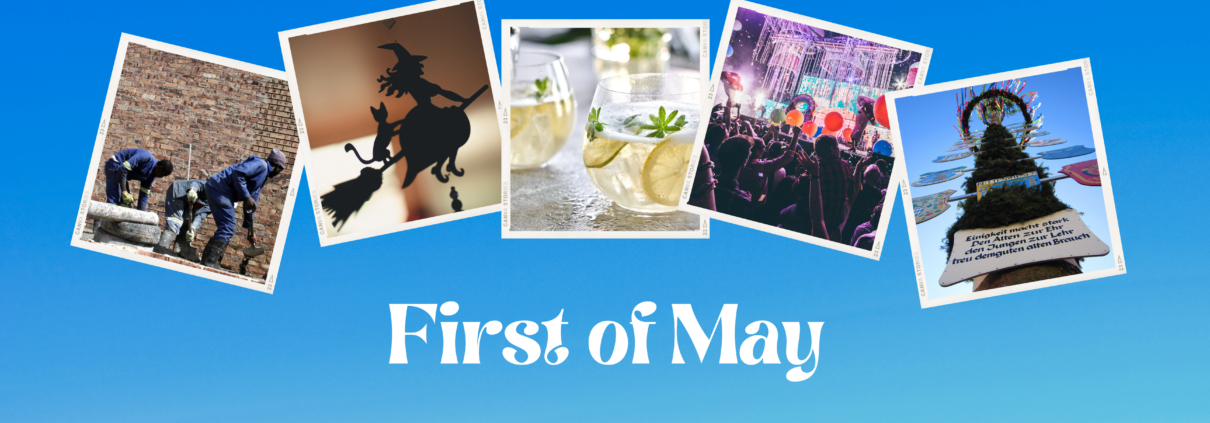MAY 1ST: a shared (and confusing) holiday
Just when I was sure that May 1st is a holiday for International Workers‘ Day, I come across a kölner preparing a Maibaumbrauch for his partner, a small group in the Mensa agreeing to dance in den Mai, and a teacher who said Walpurgis/Hexennacht.

So, is Erste Mai a day of protests and demonstrations or of celebrations for the arrival of summer?
As it turns out, it is actually both (and more)! May 1st is a super interesting day: it recalls moments of struggle and indignation, but it also commemorates the urge for change in a hopeful tone where different times coexist. In general, the desire for warmer times and renewal, and the collective merriment that accompanies this desire.
May 1st is the International Day of Workers and their Rights, also known simply as Labor Day or May Day. This day is celebrated in 80 countries. However, prior to Labor Day, May 1st used to be a pagan holiday to celebrate the start of summer in the northern hemisphere, hence the confusion. The day is known in Gaelic traditions as “Beltaine” and as time went by, diversions such as the maypole dance or flower crowns were added to the celebration.
~ LITTLE HISTORY LESSON ~

Haymarket explosion (ABC News, 2018).
Labor Day – Its modern roots trace back to the Haymarket explosion. It was May 1886, labor movements in various parts of the world were fighting for fair working conditions (which would now seem basic), like eight-hour days and union rights. One of these peaceful demonstrations was taking place in Chicago’s Haymarket Square when a bomb thrown into the crowd went off: police officers and civilians were murdered. After the shocking event, the International Socialist Conference declared May 1st as International Workers’ Day. However, it was not until 1919 that May Day was proclaimed a legal holiday in Germany.
Walpurgisnacht – In some parts of Germany, the night from April 30th to May 1st is known as “Walpurgis Night.” The name comes after St. Walburga, who worked as an abbess in England in the 8th century, battled disease, and was known for exorcising demons. Her canonization took place on May 1st. The name became famous thanks to Goethe. In “Faust” he describes The First Walpurgis Night as the struggle between pagan druids and Christian priests.

St. Walburga (Catholic online, 2023).
Hexennacht – This night is also known as “Witches’ Night” reminiscent of the witches’ dance on the Blocksberg. On May 1st, the witches are said to have gathered on the Brocken in the Harz Mountains, held a great feast, and danced with the devil. People believed that it was dangerous to be outside on this night, so they lit fires and danced wildly to deter the witches from coming too close to them or their homes. In the region, it is common to spend the Witches’ Night playing pranks to the neighbors.
Finally, the May Day celebrations have their own (very refreshing) drink: the Maibowle, a mixture of white wine, sparkling wine and woodruff. The drink was first mentioned in 854 by the Benedictine monk Wandalbertus. Prost!
~ THE PRESENT ~
To this day, the largest march for workers’ rights in Germany occurs in Berlin-Kreuzberg. Meanwhile, the Walpurgisnacht has become another pretext to drink and dance the night away in the so-called Tanz in den Mai (Dance into May). This happens in many discos and venues that organize special parties, or also outdoors with bonfires: the May Fire. When the fire dies down, some couples jump hand in hand over the embers. Jumping through the flames is said to protect and cleanse against disease. Bonfires also have shifted to become an Easter tradition in most areas.
Another tradition that is still happening to this day (I’ve seen it in Köln), although somewhat transformed, is the Maibaumbrauch, where people in love fetch small maypoles or branches, decorate them with ribbons and colors, and place them in front of the house of their chosen ones. The most archaic elements of this tradition (inclusion and gender issues, its relation to marriage and courtship, the use of whole trees) have been widely discussed and relaxed so that each person can enjoy this DIY as they see fit. In general, the maypole is a symbol of abundance, fertility, and good luck in the harvests.

Maibaumbrauch (Geheimtipp Köln, 2023).
So, in 2023 the demonstrations for workers’ rights will coexist again with colored ribbons, invitations to dance, and the promise of warmer days in Bremen. Some interesting events to join will be shared on our IG account.
Now tell us, what do you think about this holiday?


Hi Tania! Very interesting, I only knew that May 1st was related to worker’s day, so here we have two options: take the day off and relax… or go to work and get triple paid.
Now I know the others celebrations! I liked the part of „Hexennacht“, it sounds scary hahaha
Bye! :)
Hi Tania:
I really liked your article, it is very interesting to know that in a single day, people can celebrate what they want and how they want, I think it depends on the mood and personality of each person, Thank you